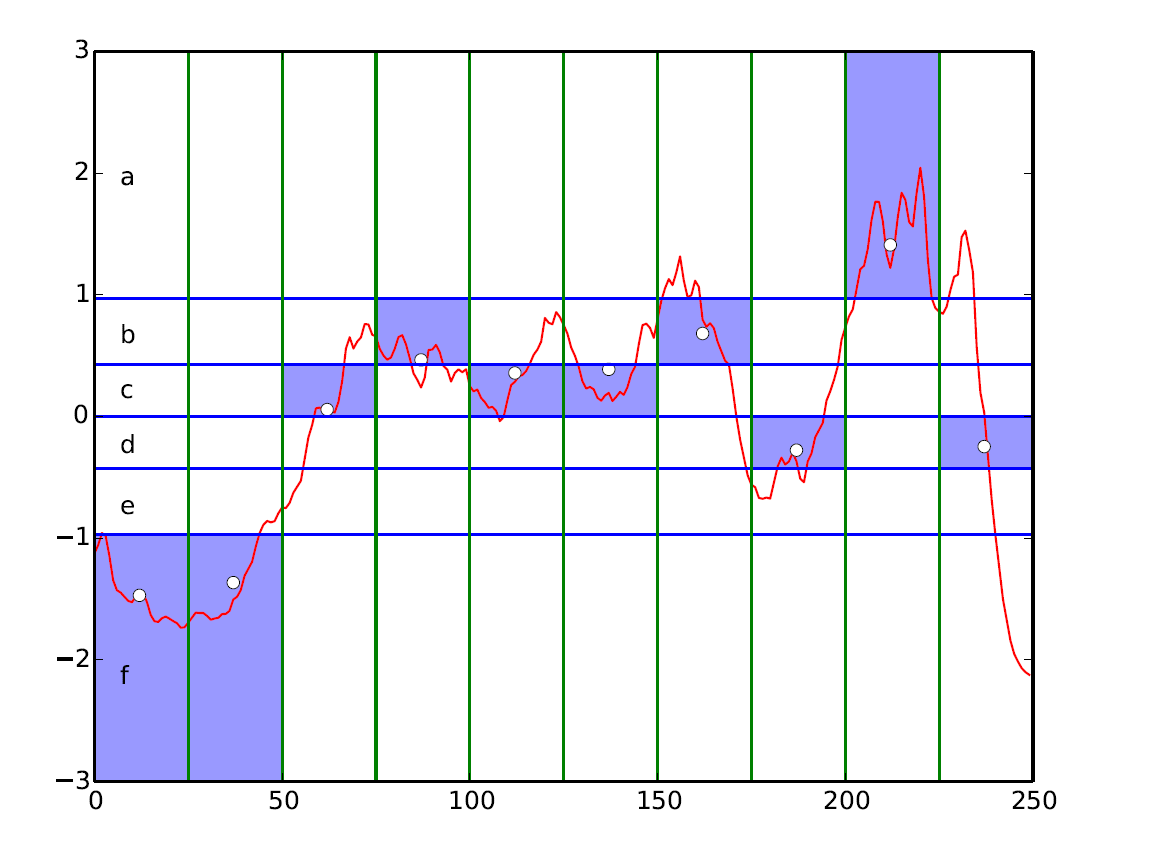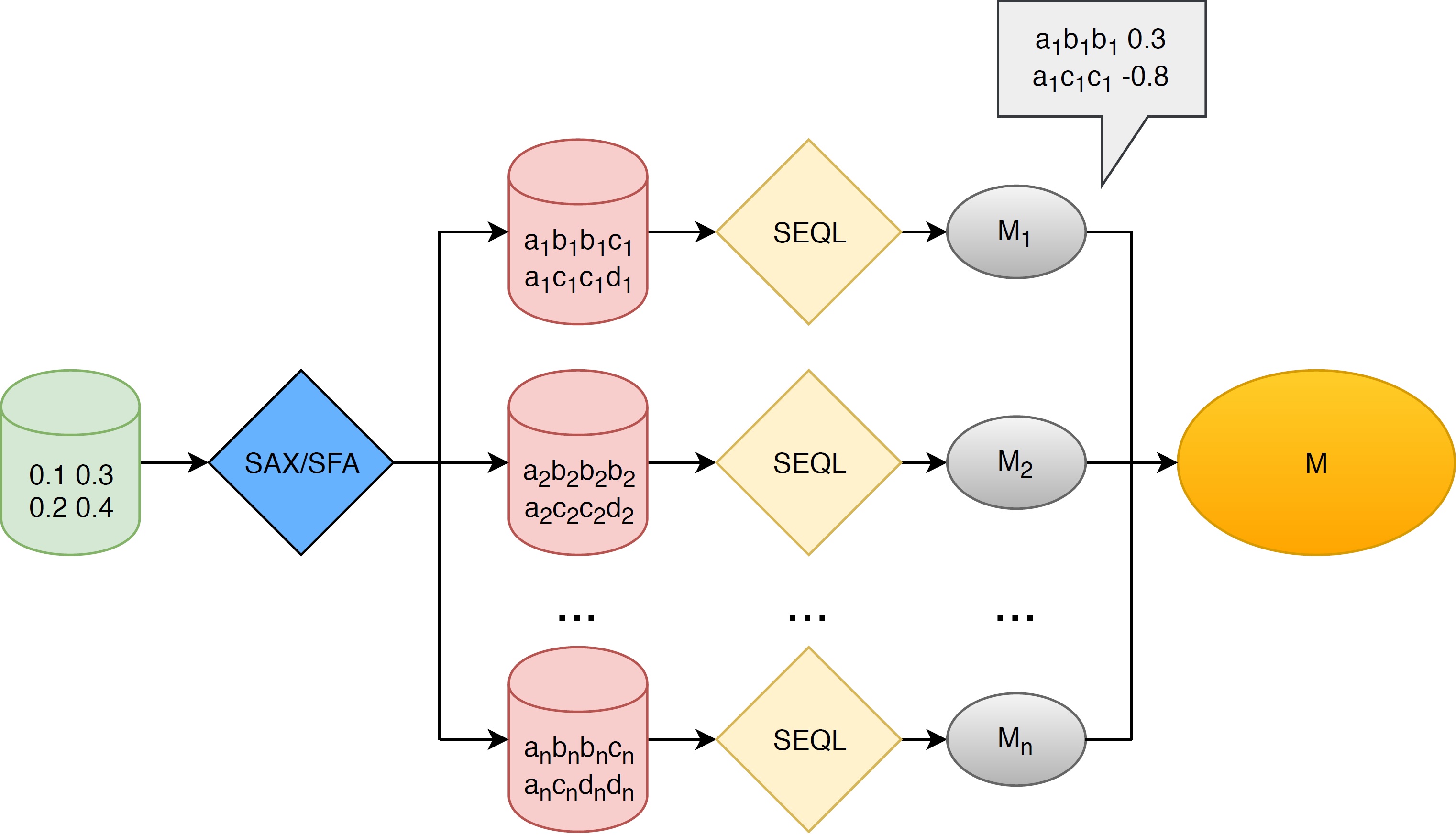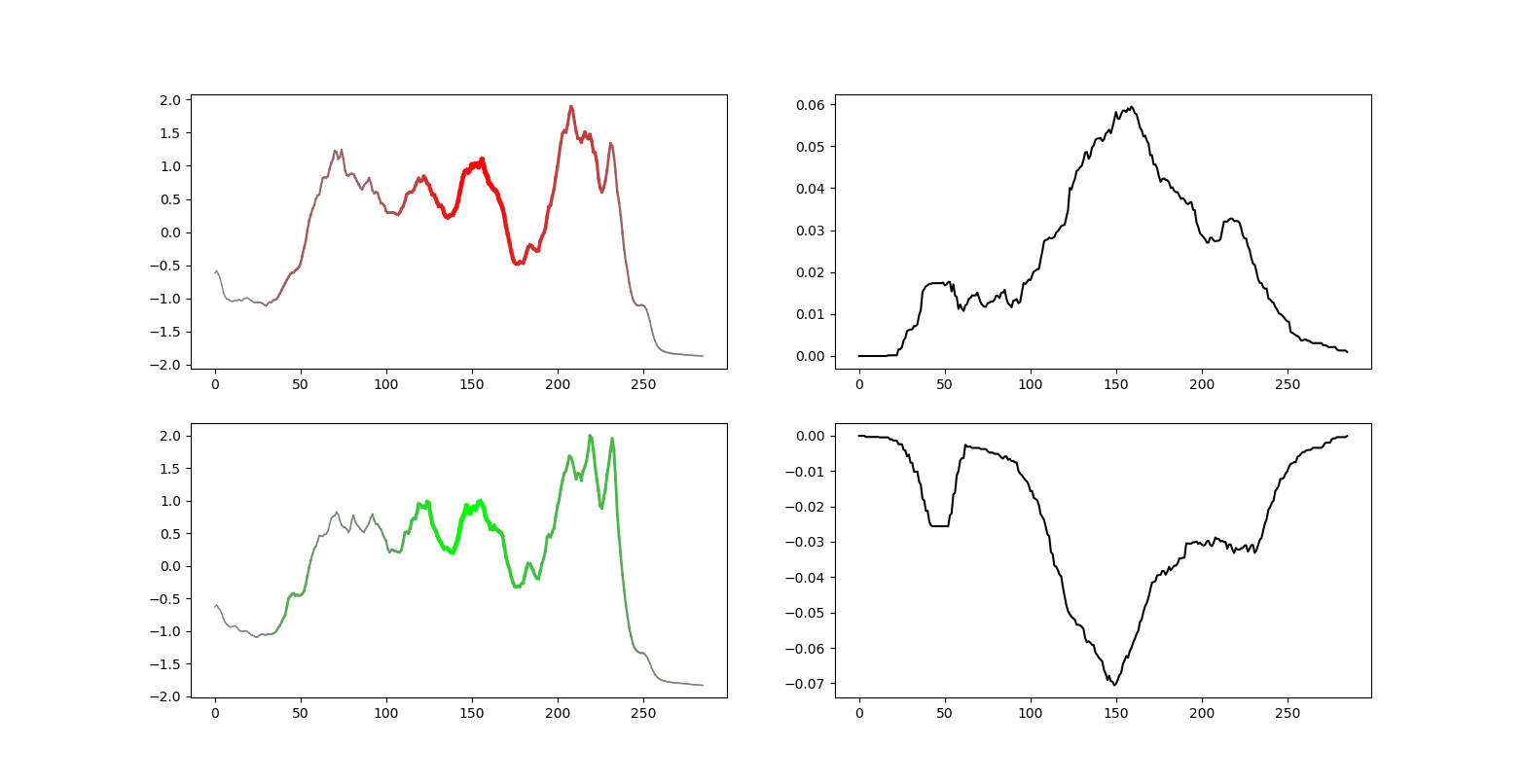Mr-SEQL is a time series classification software which utilizes multiple symbolic representations of time series.
SAX is a transformation method to convert numeric vector to a symbolic representation, i.e. a sequence of symbols from a predefined alphabet a. SAX first computes the Piecewise Aggregate Approximation (PAA) of a time series and then transforms this approximation to a symbolic representation.
PAA reduces a time series of length L to a vector of length l (l < L is also the length of the symbolic sequence) by dividing the time series into equal segments. Each segment is then replaced with its mean value.
PAA followed by a discretisation step which replaces each value of the PAA with a corresponding symbol. Symbol is selected from the alphabet based on the interval in which the value falls. There are a intervals, as many as the size of the alphabet. Each interval is associated with a symbol from the alphabet. Assuming that the time series is normal distributed, the intervals are divided under the normal distribution (i.e. N(0,1)) with equal probability.
SFA is also transforms a time series to a symbolic representation. The core differences between SAX and SFA are the choices of approximation and discretisation techniques. SFA uses a Discreet Fourier Transform (DFT) method to approximate a time series.
More information on SFA can be found here: https://github.com/patrickzib/SFA
The original SEQL software and its description can be found here: https://github.com/heerme/seql-sequence-learner
This is our first attempt in time series classification with SEQL. SEQL learn a linear classification model from the symbolic representation of time series (either SAX or SFA).
SEQL can be combined with symbolic representations of multiple resolutions and multiple domains.
As our classifier is linear, the model itself is interpretable. Furthermore, we can visualize the SAX features selected by SEQL in the raw time series domain.
To compile execute following commands in the src directory:
mkdir -p build
cd build
mkdir -p Release
cd Release
cmake -DCMAKE_BUILD_TYPE=Release ../../
make
Convert time series to multiple SAX representations:
./sax_convert -i Coffee_TRAIN -o sax.train
./sax_convert -i Coffee_TEST -o sax.test
Classify with Ensemble SEQL (./saxdir/ will store the output of the program):
./mr_seql -t sax.train -T sax.test -o saxdir
SEQL can also be used for feature selections. The command above also writes to file a list of features selected by SEQL. Following example uses sklearn Logistic Regression for classification with the selected features:
python mf_logreg.py saxdir
The steps to use SFA representation are similar. We provide in the src folder the python script that can work with the Python port of SFA. To combine SFA features and SAX features for classification, simply add both directories to the above command:
python mf_logreg.py saxdir sfadir
Our paper:
Time Series Classification by Sequence Learning in All-Subsequence Space
Other SEQL-based projects:
https://github.com/heerme/seql-sequence-learner
https://github.com/lnthach/SAX-SEQL
https://github.com/svgsponer/SqLoss
Read more about SAX and other time series techniques here. The site also hosts the popular UCR Time Series Classification Archive.
SFA implementation by the author.
The UEA & UCR Time Series Classification Repository. Datasets and implementations of most state-of-the-art time series classifiers can be found here.
This work was funded by Science Foundation Ireland (SFI).



